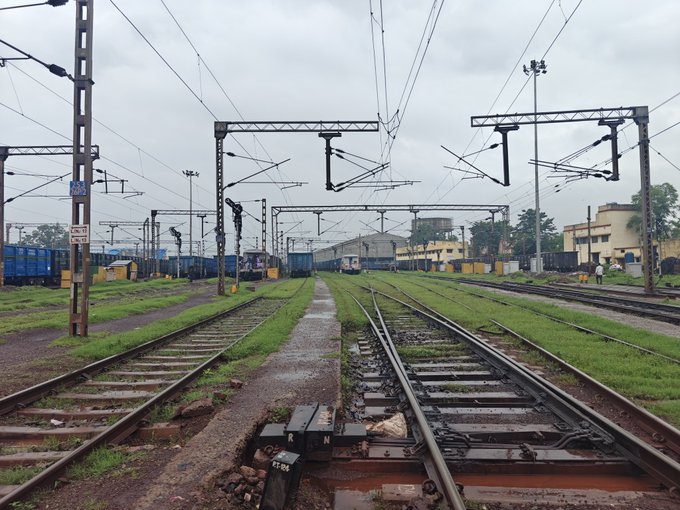
Over-dependence bulk freight hamstrings Railway revenues : Study
NEW DELHI : The Indian Railways‘ over-dependence on bulk commodities like coal, iron ore and cement is hurting its growth potential and exposing it to the competitive pressure from other modes of freight transportation, a PwC-FICCI report said.
Strategic Opportunities
The unreliable services coupled with inflexible routes and poor timeliness are affecting the railways’ potential to grab a bigger market share in the “high-value” non-bulk commodities space, it said.
Even though the rail transport, particularly over long distances, offers inherent cost efficiencies compared with road transport, its infrastructure, terminal operations, and rolling stocks are not designed to handle the fast-growing segments like E-Commerce, pharmaceuticals, FMCG, consumer durables and automobiles.
“These commodities demand more flexible, time-sensitive, door-to-door logistics, which road transport is better equipped to provide, rendering rail less competitive for such segments,” the report noted.
In the past five years, a large part of the railways’ freight volume growth – 5.6% CAGR – is contributing by a narrow set of traditional bulk commodities. Currently, coal dominates the railways’ freight basket accounting for arounf 50% of the freight volumes, followed by cement and iron ore, contributing around 10% each. But the growth in these bulk commodities are slowing down due to the structural limitations within rail logistics. On the other hand, the growth in emerging non-bulk commodities stood at 10% over the same period.
“A network that is optimised for bulk train operations may struggle to accommodate growing demand for parcel/lightweight goods or automobile transport, leading to capacity mismatches and service shortfalls,” it adds.
However, the report said that targeted interventions can boost the movement of lightweight commodities and enable greater diversification of the rail freight portfolio. “In India, more than 90% of the non-bulk freight market is transported by road. By contrast, in developed countries such as the US, 66% of non-bulk freight is moved by road, with rail or rail-intermodal systems accounting for a substantial 30%. This modal imbalance presents a strategic opportunity for IR to expand its footprint in the non-bulk segment,” the report noted.
Challenges
Though the railways has made efforts in the recent years to promote non-bulk segment. For instance, Joint Parcel Product–Railways Cargo Service (JPPRCS) scheme was introduced in 2023 to provide end-to-end logistics solutions for parcel. Similarly, Parcel Cargo Express Train (PCET) was launched this year to boost the transport of commodities like rubber and pineapples. But the modal share of rail for parcel-based cargo and lightweight commodities still remains low. The report further said that railways needs to adopt a commodity-specific approach to terminal planning, asset deployment and service design to diversify its commodity portfolio.
“Another opportunity lies in the automobile sector, specifically two-wheelers and passenger vehicles, which fall under the low rail share category but exhibit strong growth forecasts. The railways has focused on this segment by modifying the AFTO scheme, introducing modern rolling stock (NMG and BCACBM coaches) and assisting the development of new automobile loading terminals. These efforts have increased the modal share of rail in automobile transport from 1.2% in FY14 to approximately 20% in FY24,” the report said.
Source : FE
